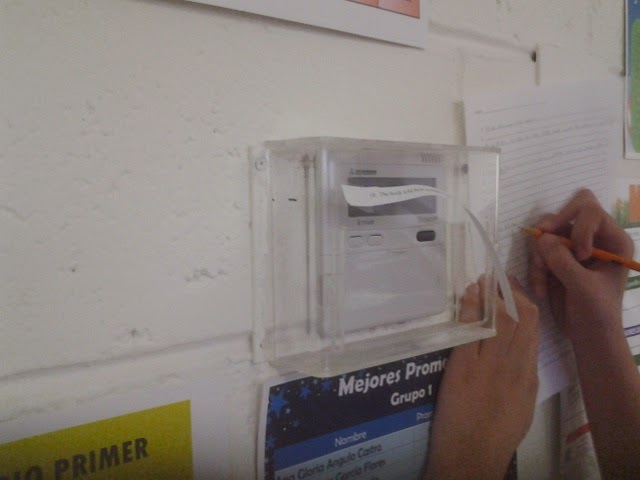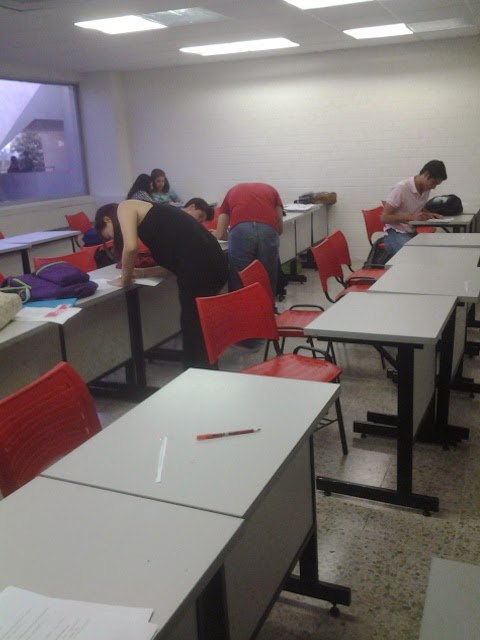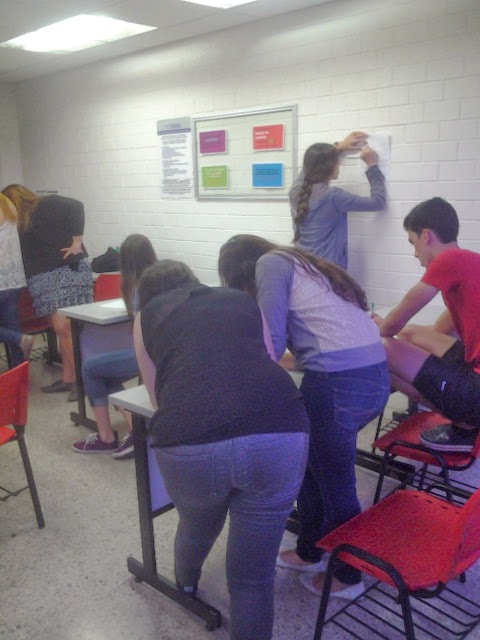 What is my student doing at the window? Admiring the view? Taking a break? Trying to get warm by leaning against the window heated by the sun? Actually he's working on a worksheet!
What is my student doing at the window? Admiring the view? Taking a break? Trying to get warm by leaning against the window heated by the sun? Actually he's working on a worksheet!There are a lot of people who feel that worksheets for the most part are no longer needed in class. It is an interesting and environmental idea, but sometimes I just like having my students use worksheets.
However, I do think worksheets can become a crutch. Like PowerPoint, webquests or any classroom tool, if we use it the same way too much, it doesn't provide the variety our students need.
This blog is not about a brand new technique. I think teachers were doing this back when I was in elementary school! However, it is an easy technique to use a worksheet in class, but vary the format a little. Students tend to like the fact that get to move, and I like the fact that they are getting work done.
Step 1. Select the right type of worksheet. In this case I used a "correcting" worksheet. It had 25 different sentences that were not parallel. The students needed to re-write the sentence to make the sentence parallel. If also you teach parallelism in writing here are 15 sentences your students could fix.

Step 2. Cut the worksheet up into strips (with each question / sentence being a different strip).
 Step 3. Tape the strips everywhere around the classroom.... I mean everywhere! On desks, on windows, on walls. With little ones putting them under tables and chairs is fun, but my high schoolers care too much about their clothes to crawl under a chair. If you write in a really big font you can tape it to the ceiling and have them look up find that sentence.
Step 3. Tape the strips everywhere around the classroom.... I mean everywhere! On desks, on windows, on walls. With little ones putting them under tables and chairs is fun, but my high schoolers care too much about their clothes to crawl under a chair. If you write in a really big font you can tape it to the ceiling and have them look up find that sentence. Step 4. Give the students a set amount of time (I gave 20 minutes for 25 questions) to walk around the class and try to fix as many sentences as they can. Encourage them to work with a partner as long as they keep the communication in English.
Step 4. Give the students a set amount of time (I gave 20 minutes for 25 questions) to walk around the class and try to fix as many sentences as they can. Encourage them to work with a partner as long as they keep the communication in English. Step 5. Give a final 5 minutes to compare their answers with another person / pair.
Step 6. As a class go through the answers. If they can't fix a sentence try to lead them towards the answer, but don't give it to them. If they still can't find it skip it and go to the next sentence. Sometimes they just need time away from the sentence to see the mistake. Normally they figure out all of the sentences, but when they don't I prefer to assign the ones they don't have as homework rather than to give them the answers.
Things to keep in mind
Control: You need to make sure the groups are controlled. If they start aren't actively working give them a warning and then have them sit down on their own with the worksheet.
Type of worksheet: Make the answers easy(ish) to write. You don't want to do this if each answer requires a two paragraph answer. On the other hand, just having them write down A or B doesn't get much writing practice in (nor does it help them study later)! Short answers are your best bet.
Time: Set a time limit and stick to it Some students are faster than others, that's fine. I like to give way too many problems. For example I may give 25, but I think getting 20 done is good. IN the last minute I encourage students to check with other groups and finally go over it as a class. This way even if they didn't get to all of them they have the answers in the end and there (usually) aren't fast finishers.
Like I said, nothing new, but always fun! Enjoy :)




















